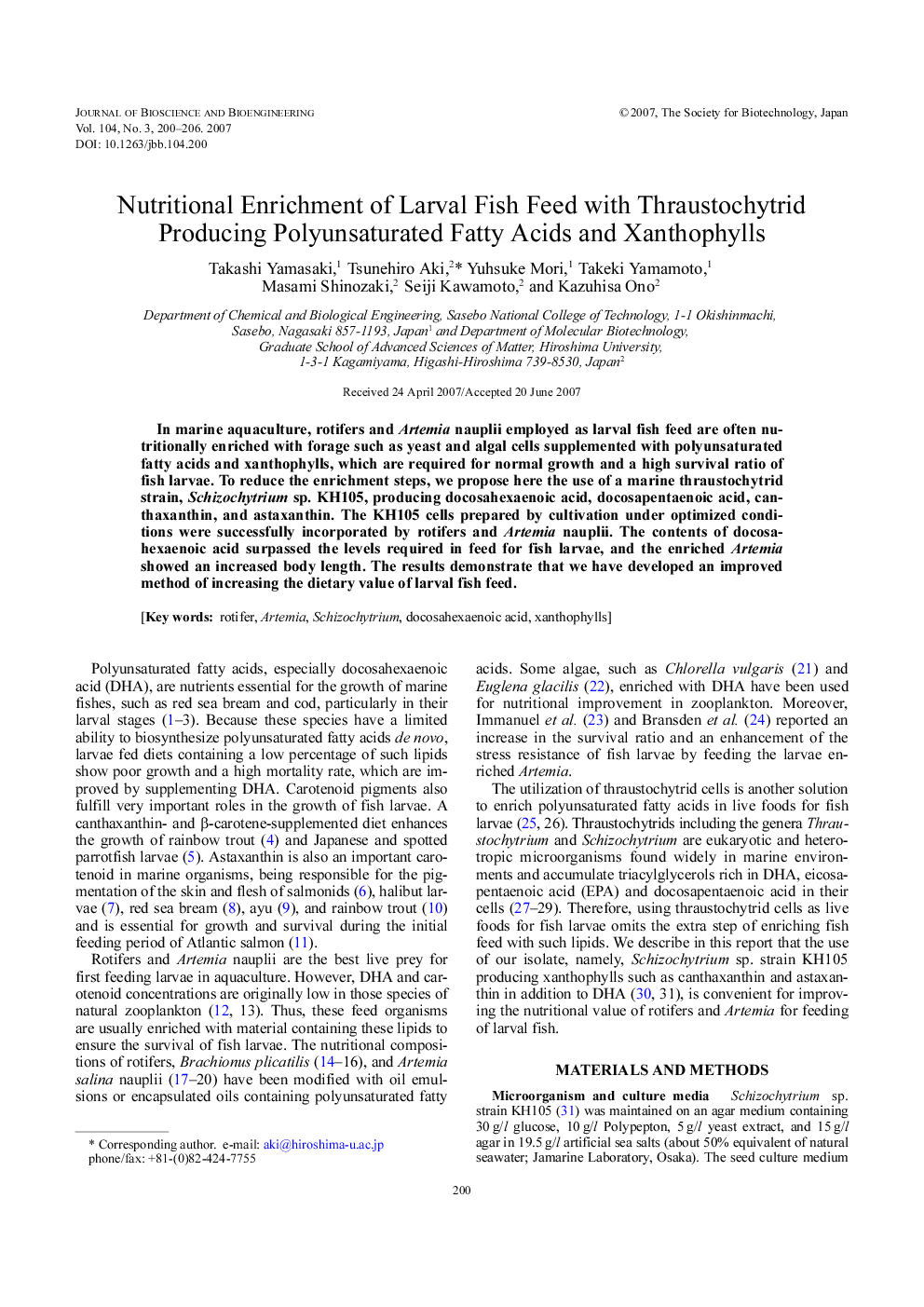| Article ID | Journal | Published Year | Pages | File Type |
|---|---|---|---|---|
| 22498 | Journal of Bioscience and Bioengineering | 2007 | 7 Pages |
In marine aquaculture, rotifers and Artemia nauplii employed as larval fish feed are often nutritionally enriched with forage such as yeast and algal cells supplemented with polyunsaturated fatty acids and xanthophylls, which are required for normal growth and a high survival ratio of fish larvae. To reduce the enrichment steps, we propose here the use of a marine thraustochytrid strain, Schizochytrium sp. KH105, producing docosahexaenoic acid, docosapentaenoic acid, canthaxanthin, and astaxanthin. The KH105 cells prepared by cultivation under optimized conditions were successfully incorporated by rotifers and Artemia nauplii. The contents of docosahexaenoic acid surpassed the levels required in feed for fish larvae, and the enriched Artemia showed an increased body length. The results demonstrate that we have developed an improved method of increasing the dietary value of larval fish feed.
